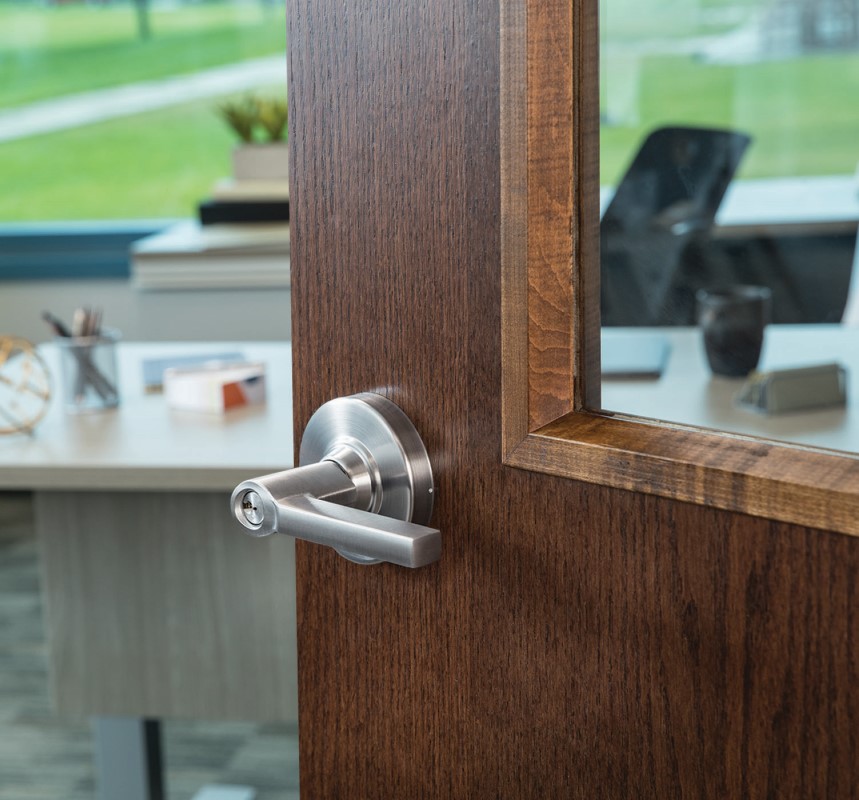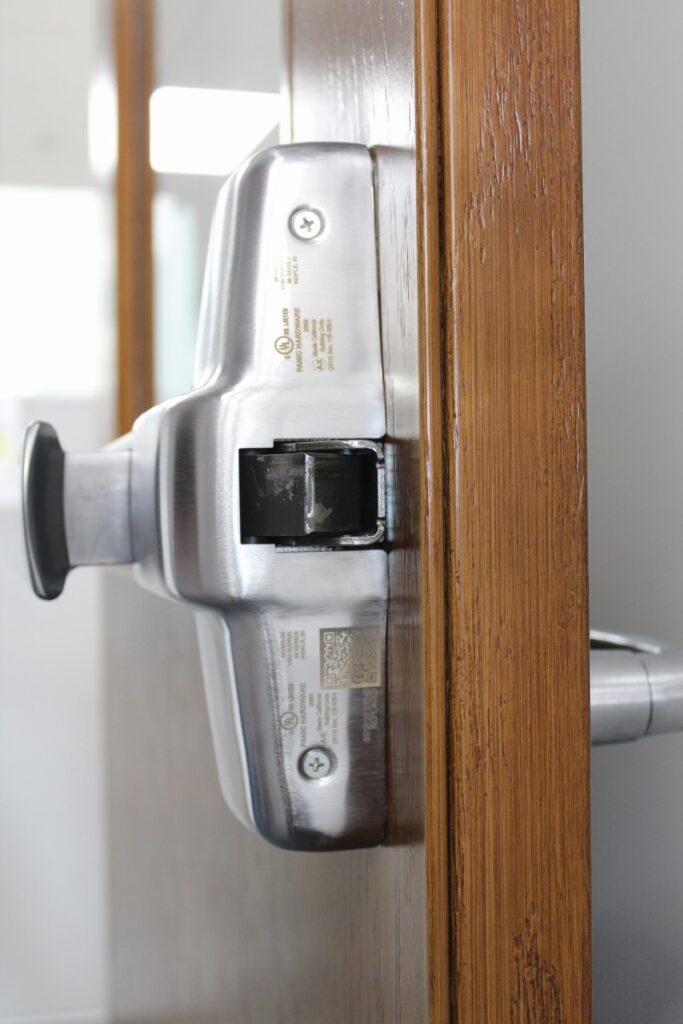Last week, Mark Kuhn wrote a post about a complicated application he had run into on a project, and several alternative solutions were offered. Today’s post from Mark was inspired by those comments.
~~~
Because of my “Day Job” (this is what I like to call my role as Architectural Consultant for Allegion), you will notice that a lot of my posts are centered around real-life problems and situations that I encounter. I write about the codes that came into play, how I handled the situation, and maybe even the particular hardware that was used to solve the problem. The funny thing about writing a hardware specification is – EVERYONE has their own way of writing a spec and applying hardware to an opening. The even crazier thing is – most of those ways are CORRECT!
I took part in an experiment many years back, where about a dozen experienced hardware specwriters were given the same set of drawings and the same basic requirements for a project (around 60 openings) and were all told to write a spec. Now there was a lot of cool data that came from this experiment, from how long it took to write, to how many sets one person used compared to another person, to how much money one spec totaled vs. another. But to me the most interesting revelation was that no matter how different each of our specifications were…THEY WERE ALL CORRECT!
 Whether in my “day job” or as a DHI instructor or as an AHC exam grader, I have the opportunity to either check or grade a lot of hardware specifications. And I always come to the same conclusion: there is more than one way of doing things. (I was going to use an old phrase that my father used about cats but I love cats and thought better of it. ) When it comes to applying hardware to a door there are really only TWO factors that matter: 1) Will it function? 2) Is it code compliant?
Whether in my “day job” or as a DHI instructor or as an AHC exam grader, I have the opportunity to either check or grade a lot of hardware specifications. And I always come to the same conclusion: there is more than one way of doing things. (I was going to use an old phrase that my father used about cats but I love cats and thought better of it. ) When it comes to applying hardware to a door there are really only TWO factors that matter: 1) Will it function? 2) Is it code compliant?
Will it function?
The word “function” is multifaceted. First, will it function in the way the owner would like it to function? This can be as simple as “We never lock our offices, so we don’t need locks on our office doors.” If I then specify locks for the office doors, they don’t function the way the owner wants them to. Believe me, this is a very simple example, but this can become a very complicated process. Especially if the way the owner wants the door to operate violates factor #2 (Is it code compliant?)
Second, will it function mechanically? We spend years training hardware specwriters to get this right. From how many cylinders are needed on a particular opening to “Will a swing clear hinge work on a standard double egress frame profile?” (BTW the answer is NO.) I could list pages of examples of things I’ve seen, but you get the point. The door needs to be specified with hardware that will work in relation to the location, material, width, height, fire rating, thickness, etc.
Obviously, this is a big deal! After all, it’s the focus of IDigHardware. People have spent their entire careers trying to understand and interpret the building codes, and as someone who has spent a great deal of time over the last few years studying them, teaching them, and trying to interpret them, I can tell you from experience this is no small or easy task.
I still get asked questions that I do not know the answer to, so I once again go to either iDigHardware or to my code books to try to find the answers. You could say it has become the mission of Lori and myself to try to raise the level of code expertise across the entire industry and beyond.
So, after saying all of that I’m going to keep this at a pretty high level. When I’m working on hardware for a project or looking over hardware sets that someone else has written, I look for a few main things:
- Does the door and hardware allow free egress at all times?
- If it’s a fire door assembly, is the door self-closing and self-latching?
- Does the opening meet all accessibility requirements?
These are the most common “red flags.” MOST openings must meet these requirements, and if a particular opening doesn’t, then we need to be able to find the section in the adopted building code that allows for the exception.
Along with many of you loyal iDigHardware readers, I have spent my career doing the things that I have just explained in my post. One of the reasons we have such an interesting job is that our industry is always evolving and manufacturers are inventing new and unique pieces of hardware all the time. And if that wasn’t enough to keep up with, the codes change every 3 years. That’s why we say “If it were easy, they’d call it EASYWARE.” ( I stole that from Lori )
You need to login or register to bookmark/favorite this content.










I am so getting a coffee mug with that written on it!!!!
John, that sounds like a great promo item to me 🙂
-Mark
Nice Job Mark.
Thanks Kevin!
-Mark
If it was easy, they wouldn’t call it hardware. Originally related to me by Bob Larson, AHC
Very useful Knowledge i Exactly searching for that and it saves my time, Thanks